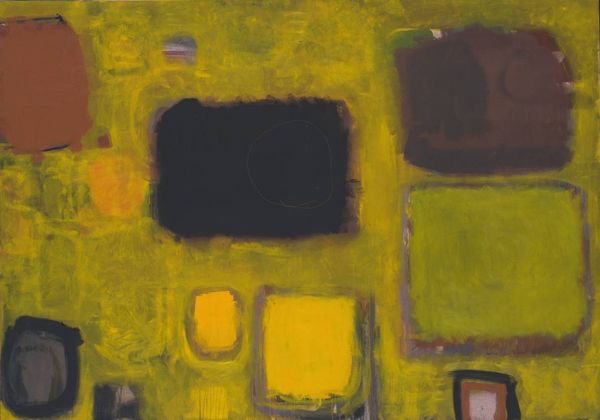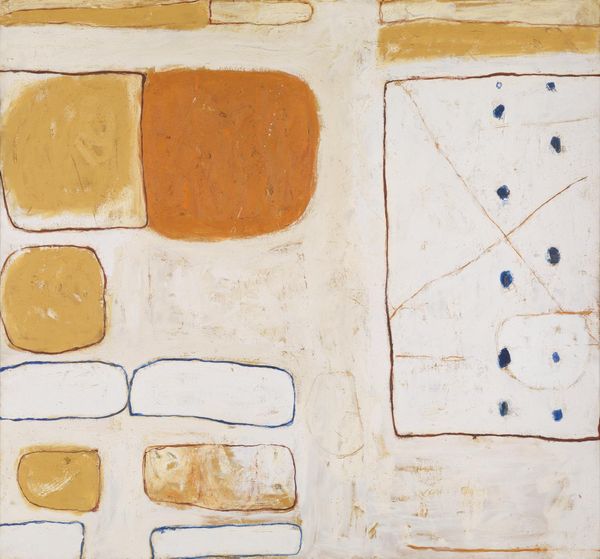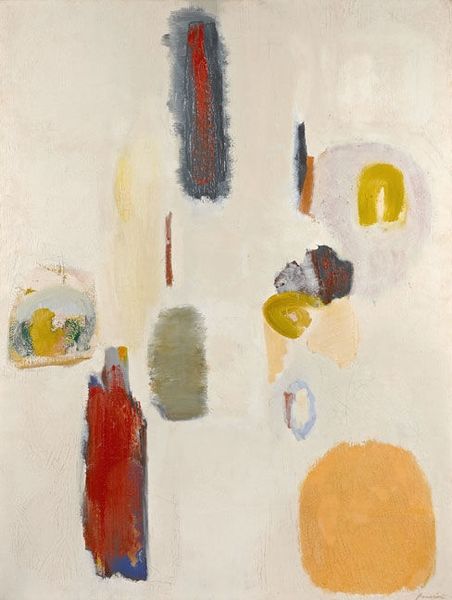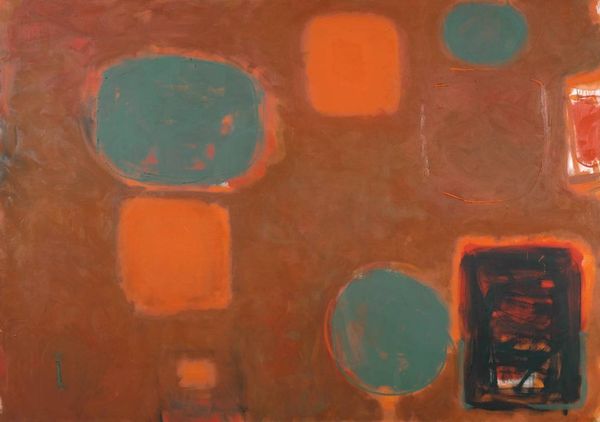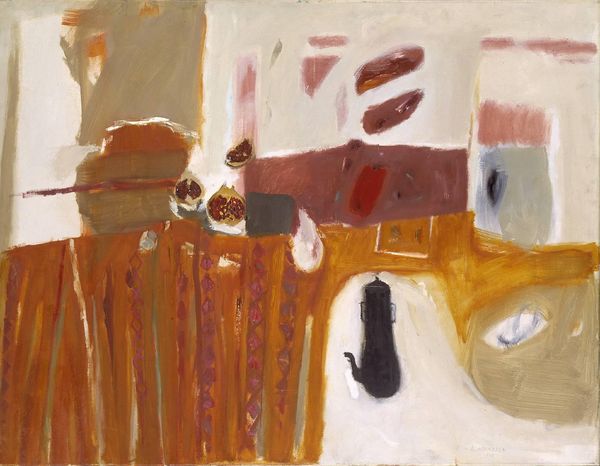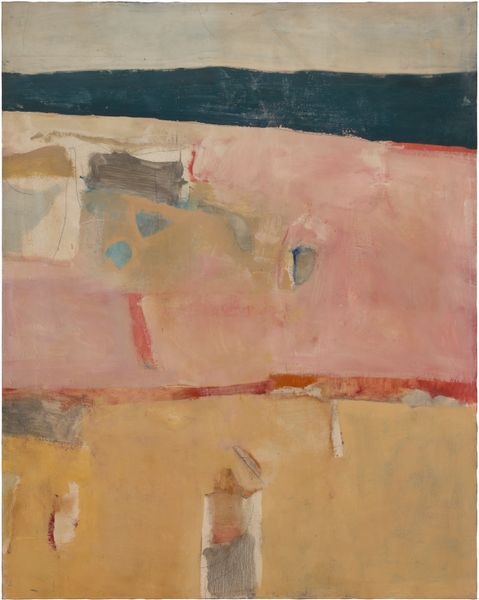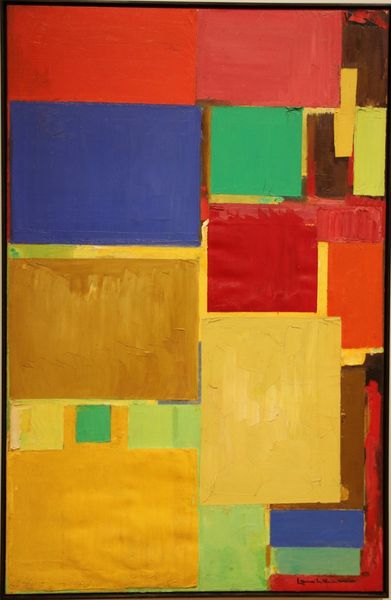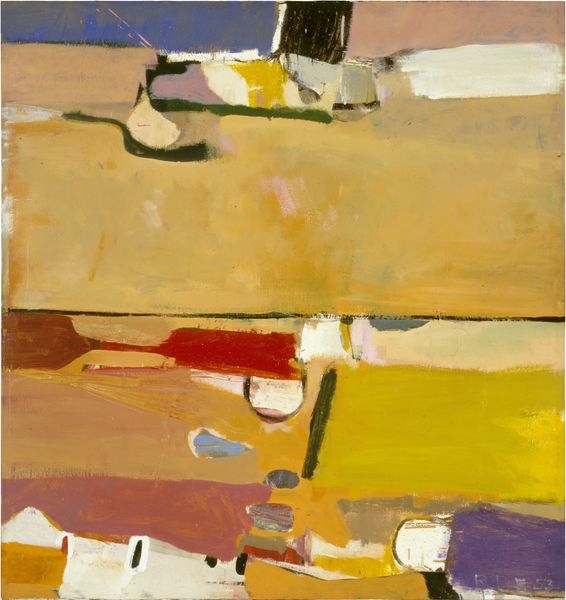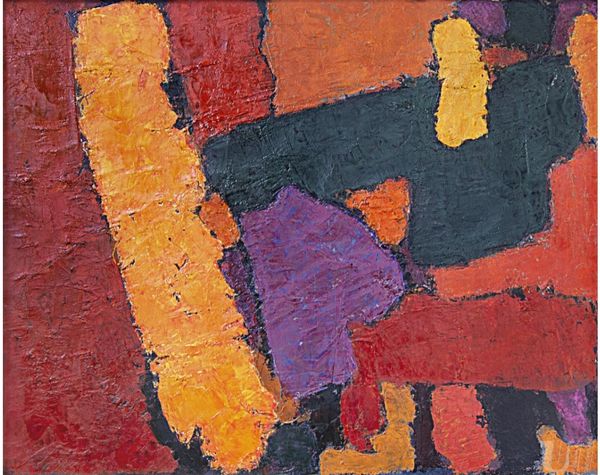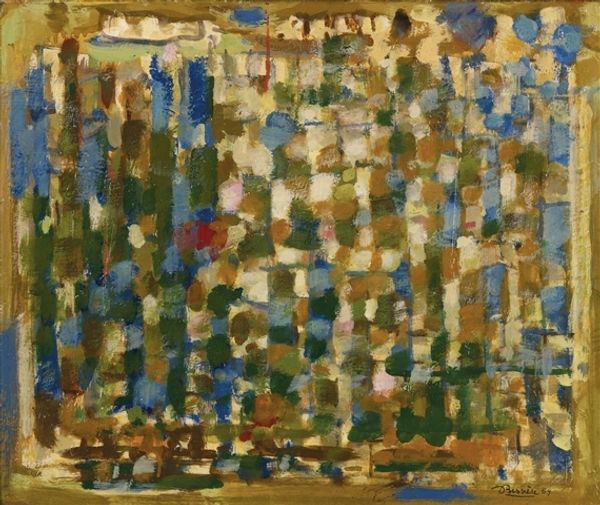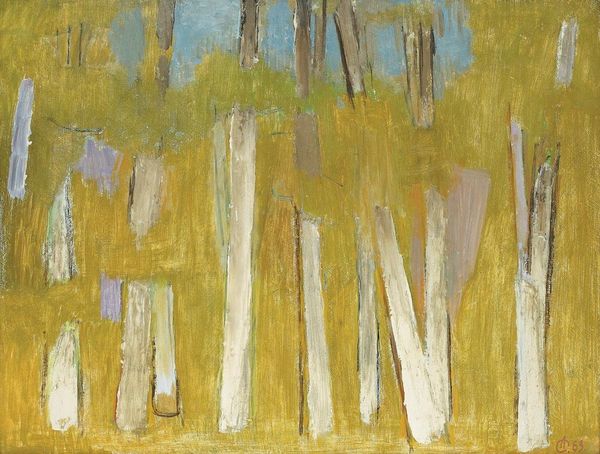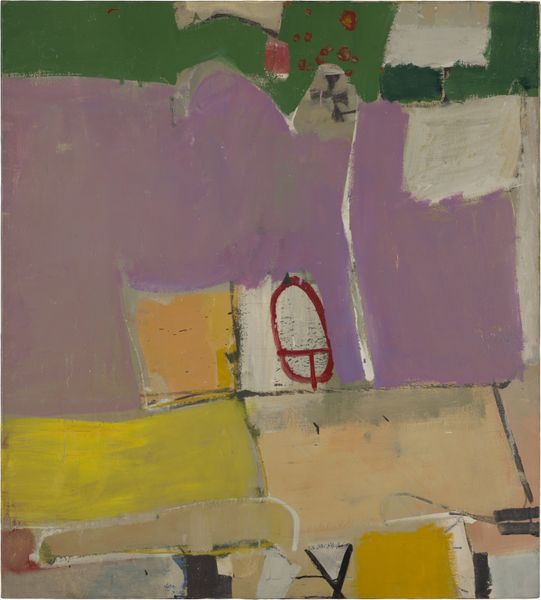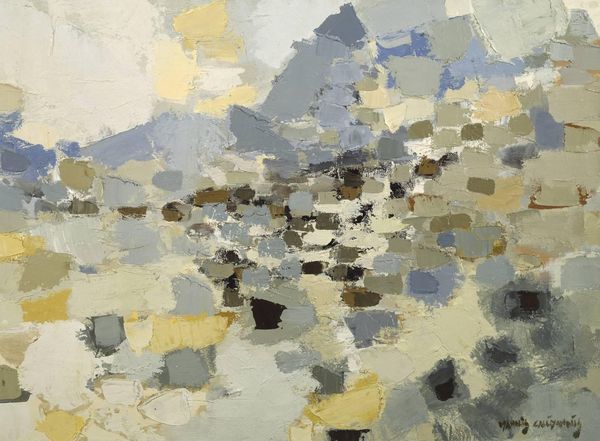
Dimensions: support: 864 x 1118 mm frame: 909 x 1165 x 70 mm
Copyright: © The estate of William Scott | CC-BY-NC-ND 4.0 DEED, Photo: Tate
Editor: William Scott’s "Ochre Still Life" presents a compelling arrangement of forms. The muted color palette evokes a sense of earthiness. What can you tell me about the materials and the making of this work? Curator: Notice the layering of the paint and the visible brushstrokes, which emphasize the materiality of the painting. The ochre tones suggest a connection to the earth, hinting at the raw pigments used in its creation and the artist's physical engagement with his medium. Editor: So it’s not just the image, but the physical process of painting that’s important here? Curator: Precisely. Consider how the act of applying paint becomes a performative gesture, revealing Scott’s labor and transforming ordinary materials into art. How might we see these forms, then, in relation to their means of production? Editor: It shifts my understanding from just "looking" to thinking about the artist's hands and the source of the pigments. Curator: Indeed. It encourages us to consider the social and economic context of art making itself, rather than just the final image.
Comments
Join the conversation
Join millions of artists and users on Artera today and experience the ultimate creative platform.
tate 8 months ago
⋮
Scott’s use of thick paint arranged in areas that intersect like blocks signalled his allegiance to European painting as opposed to American. In the 1950s, European artists were seen to value the material of the paint itself while the work of the American Abstract Expressionists was characterised by its expansive scale. In fact, both shared some basic concerns and even retained a concern with subject matter. Scott used such still life objects as saucepans as a starting point. There are, however, often allusions to the human figure: here a pepper pot becomes distinctly phallic. Gallery label, February 2010
